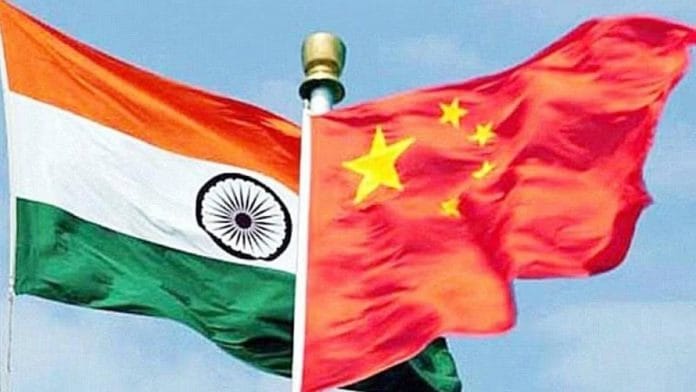Thank you dear subscribers, we are overwhelmed with your response.
Your Turn is a unique section from ThePrint featuring points of view from its subscribers. If you are a subscriber, have a point of view, please send it to us. If not, do subscribe here: https://englishdev.theprint.in/subscribe/
During 1993 to 2013, India and China signed five Treaties to ensure peace by governing the conduct of their troops on the border, the Line of Actual Control (LAC). Thus, the question is why, in 2020, China disregarded these bilateral agreements by creating a threatening military posture towards the Indian territory of Ladakh: It resulted in a war like situation. Therefore, it calls for understanding the International Law dimension keeping in view the five bilateral agreements along with the regional geopolitics. The 1969 Vienna Convention on the Law of Treaties (VCLT) provides a basis for treaty-making as an instrumentality to govern relations between sovereign nations as well as resolving sector specific global problems. The agreements signed between India and China do talk about not amassing more than 5000 troops (one brigade) on the LAC as well as not bringing in heavy armament near the LAC. They also state that in case of war exercises both countries will notify each other and not carry out these big exercises near the LAC. Thus, in essence, these agreements are all about peace and tranquility on the entire more than 3400 kms LAC that comprise huge track from Ladakh to Arunachal Pradesh. China violated LAC in 2020. Since then India made huge Army deployment on the entire stretch of LAC. The Ladakh Standoff continues with no end in sight due to China. Since Xi Jinping became General Secretary of the Communist Party of China (CPC) in 2012, China has been flexing its muscles on the LAC right from 2013 in Depsang, 2014 in Chumar, 2017 in Doklam and the 2020 escalation on 1000 km LAC in Ladakh. Ladakh Standoff has led to rupture in India-China relations with respect to the trust deficit at a level reminiscent of the major rupture between NATO countries and the Russian Federation. Many observers perceive this as a reflection of the Chinese prowess in cloak and dagger operations/doublespeak. It appears China has maintained the old habit of not letting intentions known clearly to India ever since middle of 1950s on LAC, and to perform deeds that never match words. For example, as seen elsewhere, Chinese have been meddling into the affairs of the European countries by selling them the Telecom major Huawei’s communication equipment. Yet with such apparent masked instrumentality, it could steal the data of citizens, industrial secrets, sensitive national security detail etc. The Indian leadership (irrespective of political dispensation in New Delhi) has been reaching out from the year 1988 to have good ties with China, but the Chinese have not seriously reciprocated to resolve the border issue. In order to work out the structured process of settling the border dispute and demarcating the LAC to usher in permanent peace, the Governments of India and China constituted in 2003 a dialogue process and a mechanism of Special Representatives on border talks. What is intriguing to note is that the Special Representatives have thrashed out the framework of settling the LAC question forever. Still, it seems, the Chinese top political leadership has not shown interest in it. It has been seen as lack of interest in the CPC that visualizes China as a Great Power (second to USA) and hence China does not feel the need to settle the border with India. Apparently, the Indian security apparatus all along must have known this. Therefore, after the first swearing in on 26 May 2014, Prime Minister Modi made some of the most applaudable attempts to have a permanent friendship between India and China by meeting President Xi Jinping. In their first meeting in September 2014, President Xi echoed PM Modi’s sentiments that “satisfactory resolution” is required for the border dispute. In that meeting, PM Modi took President Xi to Gandhi’s Sabarmati Ashram (Ahmedabad) in his home state Gujarat. China reciprocated by hosting PM Modi in 2018 at Wuhan for an informal summit. Then, in 2019, PM Modi took President Xi during a second informal summit for sojourn of the world famous Mamallapuram heritage site in the Tamil Nadu sea coast. It was followed by the Ladakh Standoff in May 2020 wherein China tried to push the LAC westward as per its so called 1959 claim line. India regards this as with no legal basis and considers this line dubious. To worsen the situation, Chinese have persistently laid claim many times on the Indian State of Arunachal Pradesh (AP) by renaming areas inside AP. India needs to maintain “dialogue and diplomacy” with China to resolve the Ladakh Standoff. Perhaps as a corollary to it, in July 2024, EAM Jaishankar met Wang Yi twice to expedite disengagement. So, India needs to stay the pragmatic course. But at the same time, it calls for high alert for any possible Chinese misadventure on border.
These pieces are being published as they have been received – they have not been edited/fact-checked by ThePrint


